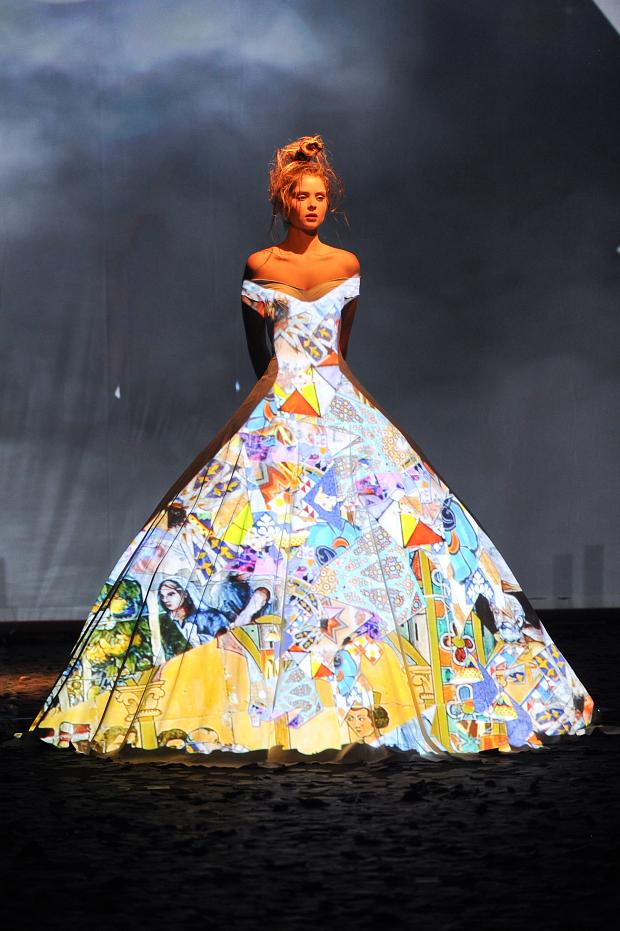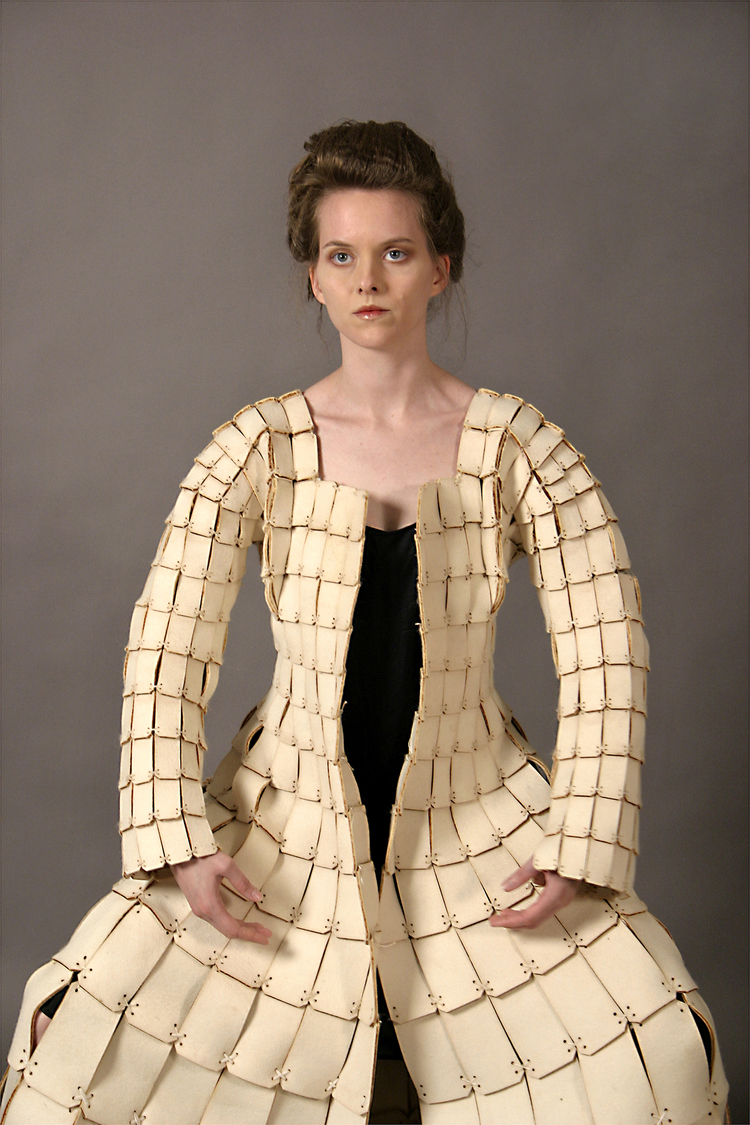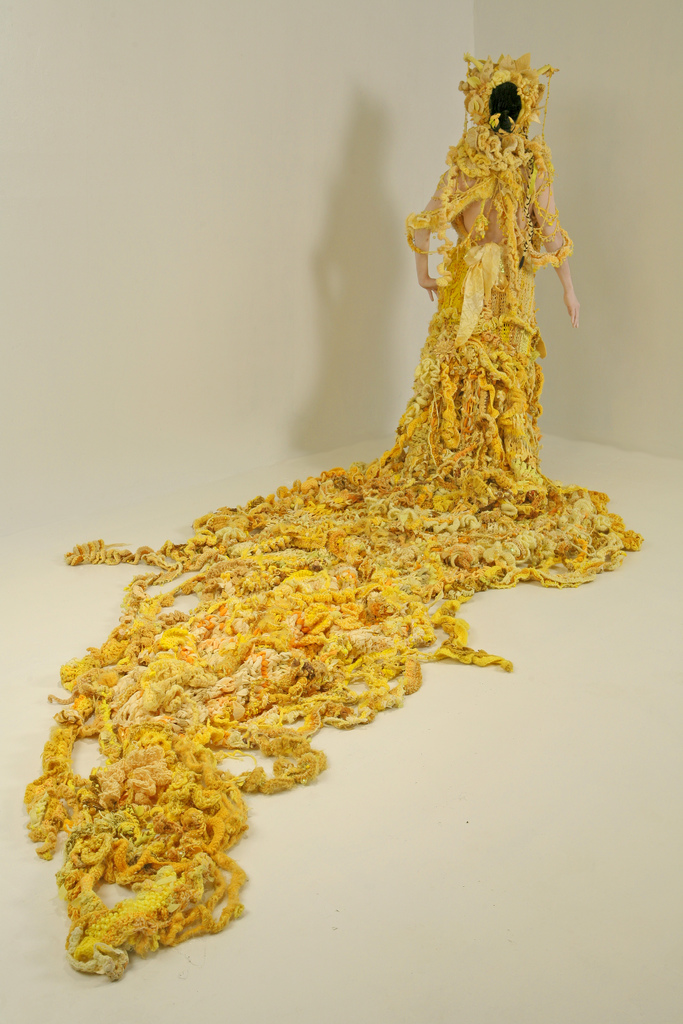
Andrea Ling
The Wild Swans
The project is the creation of a series of kinetic garments that tell the story of “The Wild Swans” by Hans Christian Anderson. In the fairy tale, 11 princes have been turned into swans from a transformative spell cast by their wicked stepmother. Their sister, the princess, rescues the princes by collecting stinging nettles and knitting them, under a vow of silence and in great pain, into magical shirts so that her brothers can return to their human shape. She is very nearly done knitting them all when she runs out of time; she throws the sweaters onto her brothers to transform them, but the last one is incomplete, leaving her youngest brother forever with a swan’s wing instead of an arm.









